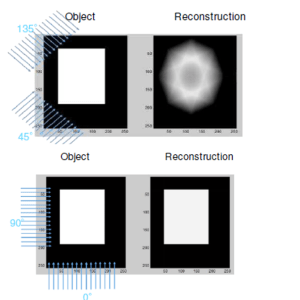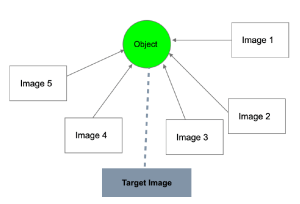Index
Service-Oriented Preprocessing for Cost-Effective and Efficient Deep Learning Training
Uncertainty analysis for automated misannotation detection in medical segmentation datasets
Automated Wood Identification Using Micro-Computed Tomography on a Cellular Level: A Study with Maple and Pine Wood Samples
Wood identification is of paramount importance in various fields, including forensic verification of timber origin and detecting illegally logged tropical timber at ports [1]. While DNA analysis has been widely used for this purpose, the cellular-level structure of wood also offers valuable information for species discrimination. This research explores the potential of micro-computed tomography (µCT) systems, with resolutions down to 1µm, to reveal distinct features in wood samples for automatic identification and quantification [2, 4, 5].
In this Master’s thesis, we focus on investigating wood identification through micro-CT using ten exemplary samples of maple and pine wood. All wood samples underwent µCT scanning, and the primary objective is to semantically segment the wood volumes, preferably in 3D, to extract different cell types. An optimal labeling tool and strategy will be selected to facilitate the segmentation process. Considering that data from µCT scans are inherently noisy, an essential aspect of this research is to determine an optimal denoising strategy [3].
In the subsequent step, we aim to identify specific structures within the wood samples that allow for accurate assignment to a particular tree species or genus. Due to the limited number of CT volumes available, techniques will be employed to virtually increase the dataset’s size. Furthermore, considering the distinct anatomical characteristics of wood in different cutting directions (axial, lateral, and radial), the orientation of the wood samples will be considered and detected for more accurate identification.
Some of the salient features that can be identified through µCT systems include the distinction between scattered-pored woods (e.g., beech, birch, maple) and ring-pored woods (e.g., oak, elm, ash) based on pore structure, as well as the structure and number of resin canals in conifers. Additionally, other features, such as the shape of the tracheid and the number of rays, contribute to the clear identification of wood samples.
Through this research, we aim to establish a robust framework for wood identification using micro-CT, paving the way for future applications in identifying tropical timber from µCT scans of timber samples. The potential of this method lies in its ability to complement DNA-based wood identification and offer a comprehensive approach to verify the origin of timber and combat illegal logging effectively.
[1] Jiao, L., Lu, Y., He, T., Guo, J., & Yin, Y. (2020). DNA barcoding for wood identification: global review of the last decade and future perspective, IAWA Journal, 41(4), 620-643.
[2] Steppe, K., Cnudde, V., Girard, C., Lemeur, R., Cnudde, J. P., & Jacobs, P. (2004). Use of X-ray computed microtomography for non-invasive determination of wood anatomical characteristics. Journal of structural biology, 148(1), 11–21.
[3] Ghani, M. U., Ren, L., Wong, M., Li, Y., Zheng, B., Rong, X. J., Yang, K., & Liu, H. (2017). Noise Power Characteristics of a Micro-Computed Tomography System. Journal of computer assisted tomography, 41(1), 82–89.
[4] Haag, V., Dremel, K., & Zabler, S. (2022). Volumetric imaging by micro computed tomography: a suitable tool for wood identification of charcoal, IAWA Journal, 44(2), 210-224.
[5] Applications in the scope of anatomical wood identification using sub-µCt based volumetric images. In: IUFRO Div 5 Conference: The forest treasure chest: delivering outcomes for everyone; 4-8 June 2023, Cairns, Australia.
End-to-End SMPL Parameter Estimation and Template-to-Scan Registration Tailored Towards Automatic X-ray to CT Initialization
Abstract: In the field of interventional image fusion, an automatic initialization process is highly desired to reduce reliance on manual user inputs. Recently, several techniques have been proposed which utilize landmarks to provide an efficient initialization for 2D/3D registration [1, 2]. Alternatively, another method involves directly regressing the 6D orientation of the CT volume based on the input X-ray image. Each of these approaches, however, encounters difficulties in gathering adequate ground truth data to train a sufficiently robust system [3].
In addition to these methods, there’s a growing line of research investigating the utilization of statistical shape models to provide an effective initialization for 2D/3D registration algorithms. When given X-ray images paired with ground truth statistical shape model parameters, multiple approaches can be employed to solve the problem of estimating these parameters. The challenge, however, lies in establishing a ground truth pairing between the CT volumes and the statistical shape model, with the goal of learning a network which can be directly applied for 2D/3D initialization. In essence, we aim to consolidate the two-step process: first establishing pseudo ground truth parameters, then learning a network to predict the parameters in accordance with the pseudo ground truth. Our approach has the potential to reduce systematic errors incurred during the process of establishing pseudo ground truth, providing a more robust initialization that is directly suitable for use in 2D/3D registration tasks.
Moving forward, we plan to construct our proposed method using a linear inverse kinematic solver [4], in conjunction with a self-supervised template-to-scan registration process [5]. This approach will enable us to directly learn end-to-end estimation of SMPL parameters, as well as parameters to register to the input scan (CT volume). In doing so, we can directly predict the 3D CT volume-specific initialization for a given X-ray image without the necessity of an additional explicit step to register the CT volume with the statistical shape model.
References:
[1] Bier, B., Unberath, M., Zaech, J. N., Fotouhi, J., Armand, M., Osgood, G., … & Maier, A. (2018, September). X-ray-transform invariant anatomical landmark detection for pelvic trauma surgery. In International Conference on Medical Image Computing and Computer-Assisted Intervention (pp. 55-63). Springer, Cham.
[2] Grupp, R. B., Unberath, M., Gao, C., Hegeman, R. A., Murphy, R. J., Alexander, C. P., … & Taylor, R. H. (2020). Automatic annotation of hip anatomy in fluoroscopy for robust and efficient 2D/3D registration. International journal of computer assisted radiology and surgery, 15(5), 759-769.
[3] Grimm, M., Esteban, J., Unberath, M., & Navab, N. (2021). Pose-dependent weights and Domain Randomization for fully automatic X-ray to CT Registration. IEEE Transactions on Medical Imaging.
[4] Shetty, Karthik, et al. “PLIKS: A Pseudo-Linear Inverse Kinematic Solver for 3D Human Body Estimation.” Proceedings of the IEEE/CVF Conference on Computer Vision and Pattern Recognition. 2023.
[5] Bhatnagar, Bharat Lal, et al. “Loopreg: Self-supervised learning of implicit surface correspondences, pose and shape for 3d human mesh registration.” Advances in Neural Information Processing Systems 33 (2020): 12909-12922.
Contrastive Learning for Glacier Segmentation
Deep Learning-based Detection of Detector Artifacts
Learning Reconstruction Filters for CBCT Geometry
This project focuses on advancing computer tomography (CT) image reconstruction by utilizing neural network technology. The project is divided into three main sections.
In the first part, a versatile iterative reconstruction algorithm is introduced for Cone Beam CT (CBCT) reconstruction. This algorithm gradually converges to the actual values through backpropagation, using the disparity between reconstructed results and ground truth. The TV-Norm regularization method is also employed to reduce noise while preserving image edge clarity.
Recognizing the limitations of iterative reconstruction methods, the second part employs a data-driven CT reconstruction approach. A trainable filter-backprojection (FBP) reconstruction neural network is designed to enhance filter design, resulting in a filter with high-frequency noise suppression capabilities. This improves the quality of reconstruction.
In the third part, the data-driven FBCT approach is extended to the Feldkamp-Davis-Kress (FDK) reconstruction algorithm for CBCT. Through neural network training, a latent mapping is learned, progressively converging towards the Ram-lak filter. This sets the groundwork for learning complex filters tailored to non-circular trajectories.
Application of projection-based metrics to the optimisation of arbitrary CT scanning trajectory
 This work focuses on the optimization of CT trajectory through the use of projection-based metrics. The objective is to improve reconstruction accuracy, reduce the number of required projections, and minimize scan time. Existing metrics will be implemented and evaluated, while an optimization approach will be explored and refined. Additionally, a new metric will be developed by combining existing metrics using different weights or a learned result from a neural network. The optimized trajectory will be evaluated using RMSE and SSIM indexes to assess the quality of the reconstruction. The study aims to efficiently optimize CT trajectories by considering multiple metrics and potentially introducing a new metric for trajectory optimization.
This work focuses on the optimization of CT trajectory through the use of projection-based metrics. The objective is to improve reconstruction accuracy, reduce the number of required projections, and minimize scan time. Existing metrics will be implemented and evaluated, while an optimization approach will be explored and refined. Additionally, a new metric will be developed by combining existing metrics using different weights or a learned result from a neural network. The optimized trajectory will be evaluated using RMSE and SSIM indexes to assess the quality of the reconstruction. The study aims to efficiently optimize CT trajectories by considering multiple metrics and potentially introducing a new metric for trajectory optimization.
Tackling Travelling Salesman Problem with Graph Neural Network and Reinforcement Learning
This project focuses on solving the Travelling Salesman Problem using Graph Neural Network combined with Reinforcement Learning algorithms. Two variants of Graph Neural Network are tested, including Graph Pointer Network and Hybrid Pointer Network, both trained in Actor-Critic algorithm and double Q-learning algorithm separately. Double Q-learning is tried carefully as it is rarely applied in the training of Graph Neural Network compared with Actor-Critic. The models are tested on various types of TSP instances, showing that double Q-learning algorithm is a potential competitor in the improvement of
Graph Neural Networks.
Synthetic Projection Generation with Angle Conditioning

Computed Tomography (CT) plays a vital role in medical imaging, offering cross-sectional views of internal structures. Yet, radiation exposure during CT scans poses health risks. This study explores the application of existing deep learning models to synthesize CT projections at unknown arbitrary angles. Multiple input images from varying angles, along with their corresponding ground truth data, train different network architectures to reproduce target images from different view angles. This approach potentially reduces radiation exposure and addresses challenges in obtaining specific missing angular views. Experimental results confirm the effectiveness and feasibility of the methodology, establishing it as a valuable tool in CT imaging.